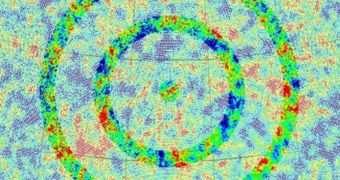Though most astronomers believe the the Universe began developing some 13.7 billion years ago, a team now proposes that the Big Bang – the event that set everything in motion – was actually preceded by a larger series of episodes of universal birth and death.
It could be that a large series of explosive events occurred before the onset of the current Universe, theoretical physicists propose in a new research paper, that was published in the online journal arXiv.
Evidence discovered in fossilized radiation permeating the Cosmos, which were left behind by the Big Bang, seem to indicate that numerous cycles of death and rebirth occurred before this final one.
The issue with this proposal is that it goes against a theory called inflation, which is responsible for explaining how the Universe behaves the way it does today. It also shows why everything is expanding at the current rate and so on.
The new idea was proposed by University of Oxford expert Roger Penrose and colleague Vahe Gurzadyan, who is based at the Yerevan Physics Institute and the Yerevan State University in Armenia.
They say that analysis of the cosmic microwave background (CMB), the leftover light from the Big Bang, revealed the existence of circular patterns that they interpret as clear indicators that the Universe cycled through numerous endings and beginnings over billions of years.
When analyzing the CMB for the first time, astrophysicists were amazed to learn that the background is in fact highly uniform. But the circular features that were found in the new study are delimited by regions exhibiting very tiny temperature variations from others.
Penrose explains that inflation cannot readily explain why these areas develop. The theory holds that the early Universe grew from the size of an atom to that of a football in the first fraction of a fraction of a second after the initial “explosion” occurred.
If that was the case, the team says, then inflation would have erased all these tiny variations. Other experts agree with the team's conclusion, but say that further investigation is needed into the issue.
“The existence of large-scale coherent features in the microwave background of this form would appear to contradict the inflationary model and would be a very distinctive signature of Penrose's model,” says Princeton University cosmologist David Spergel.
“The paper does not provide enough detail about the analysis to assess the reality of these circles,” the expert adds, quoted by Science News.
This theory will undoubtedly be refined after the European Space Agency’s (ESA) Planck telescope finishes conducting its all-sky map of the CMB.
The spacecraft's instruments are tremendously precise, which means that the risk of the new theory being misinformed will be eliminated if the new data support it.

 14 DAY TRIAL //
14 DAY TRIAL //